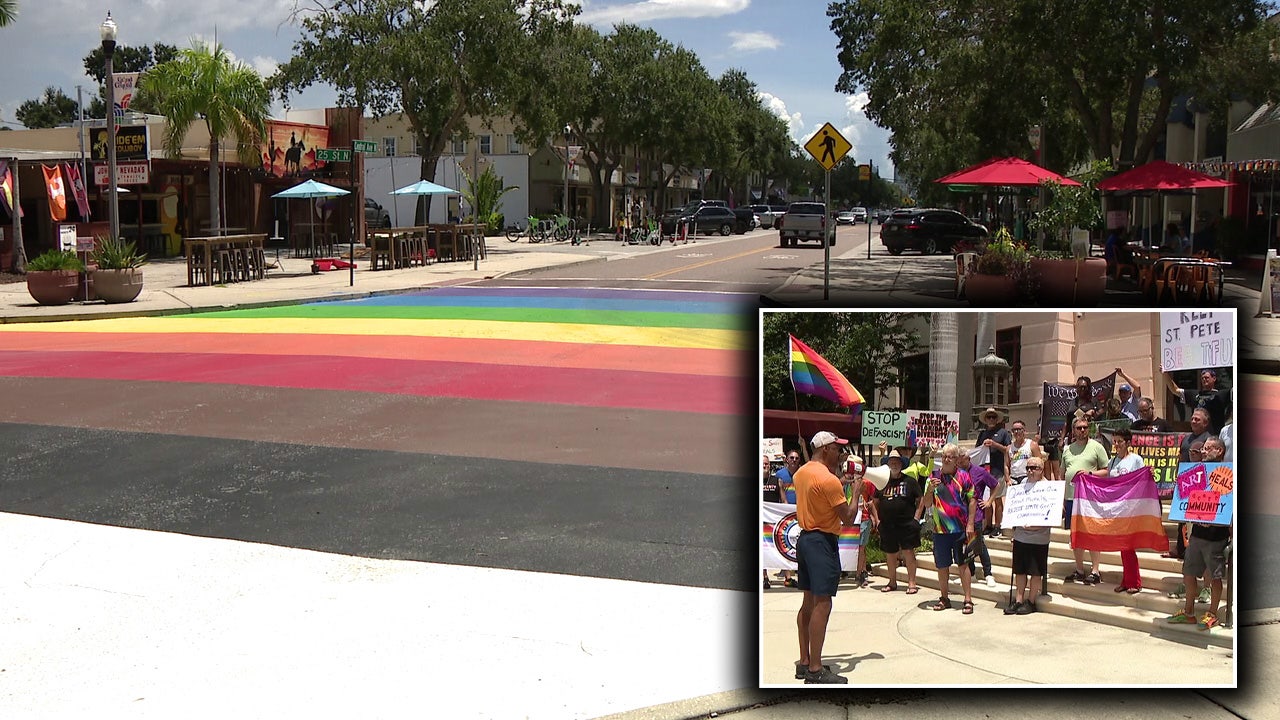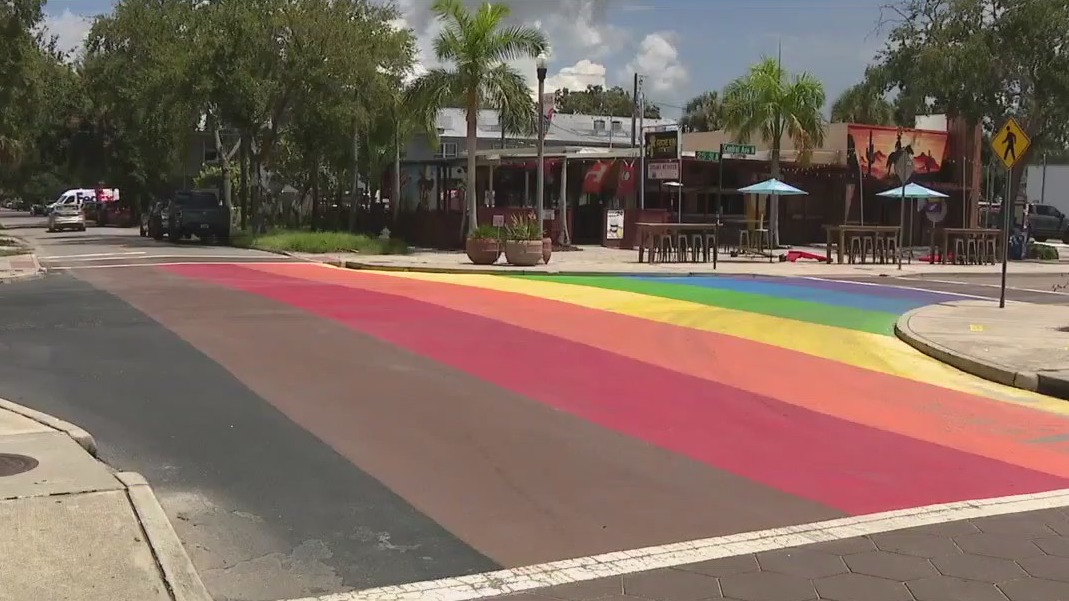 ‘Save Our Street Murals’ rally in St. Pete
‘Save Our Street Murals’ rally in St. Pete
St. Pete City Council is discussing whether to erase the city’s street art, including a pair of murals for St. Pete Pride and Black history. That’s because of a new Florida law that just took effect in July. Aaron Mesmer reports.
ST. PETERSBURG, Fla. – The future of two St. Pete murals, one honoring Black history, the other Pride, is uncertain, as city leaders respond to new state and federal mandates targeting street art.
What we know:
St. Petersburg City Council passed a motion on Thursday to hold a formal discussion next month about how to handle the city’s street art amid growing pressure from state officials. The conversation is in response to a directive from the Florida Department of Transportation requiring municipalities to identify and potentially remove artwork on roadways that may violate federal traffic control guidelines.
That includes two beloved local installations: The “Black History Matters” mural outside the Woodson African American History Museum and the Pride-themed rainbow crosswalk at Central Avenue and 25th Street.
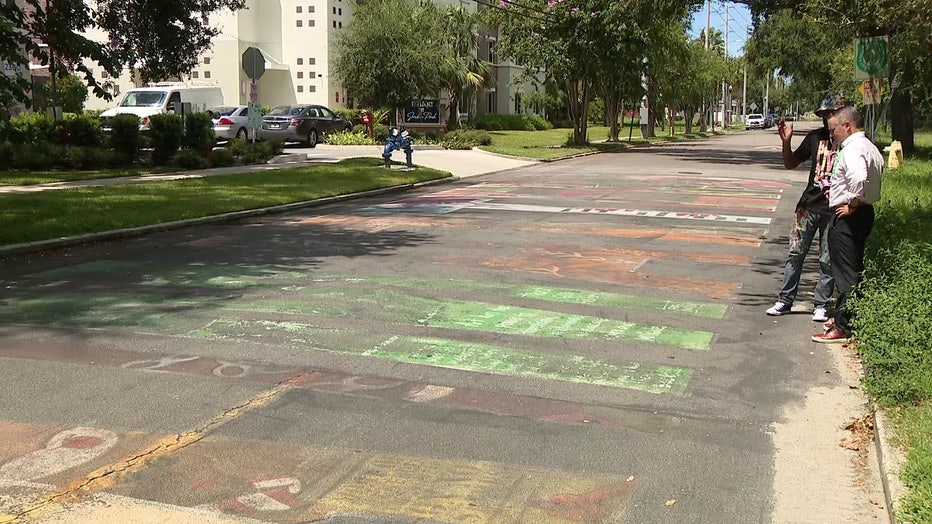
FDOT Secretary Jared Perdue believes this type of street art poses a safety risk, calling it a potential distraction to drivers. In a recent memo, he also warned that cities failing to comply with the directive could lose state funding.
The backstory:
The law that sparked the controversy took effect in July and reflects a broader state-level push to remove what leaders consider politically or ideologically driven displays from public infrastructure.
U.S. DOT is requiring all states to submit a list of intersections with potentially noncompliant markings by the end of August, with corrections expected by September 2026.
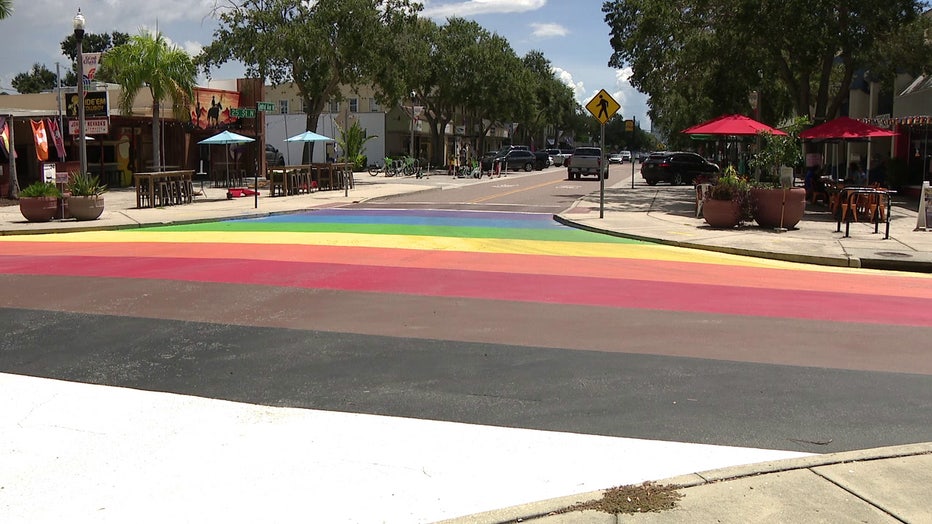
The move has sparked backlash in St. Pete.
What they’re saying:
Artist James Freeman-Kitchens, who helped paint the “M” in the “Black History Matters” mural, said his work wasn’t just decorative, it was deeply meaningful.
“Art is not just to look good, but to also lift your spirits up,” Freeman-Kitchens said. “We’re doing something positive and trying to deliver a positive message.”
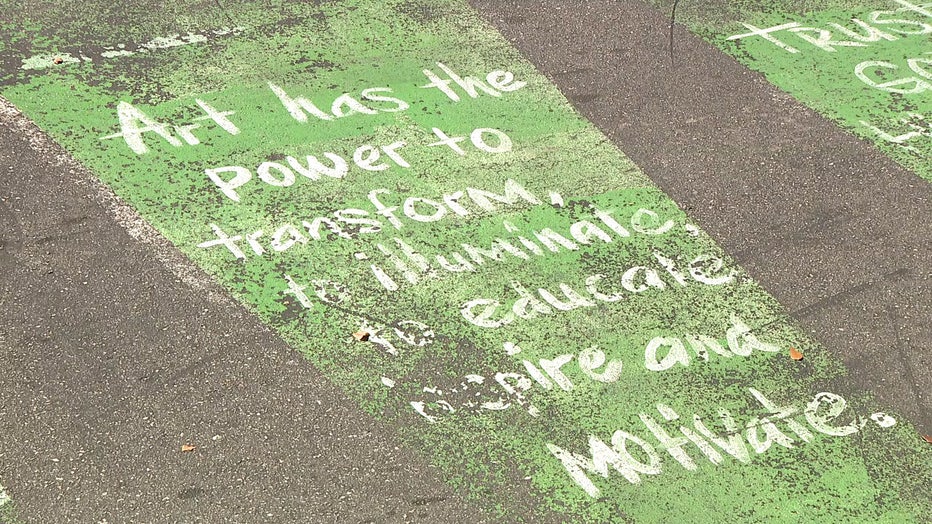
At Thursday’s council meeting, demonstrators urged leaders to stand up to the state and preserve the artwork. Many described the murals as essential visual symbols of inclusion.
“It just feels more exclusionary than anything,” said Dr. Byron Green-Calisch, the president of St. Pete Pride. “Both of these things are visual signs of inclusion… this city believes that everybody deserves the right to be here.”
Green-Calisch also criticized FDOT’s argument that the murals compromise safety, saying the real threat would be pulling funding from already under-resourced communities.
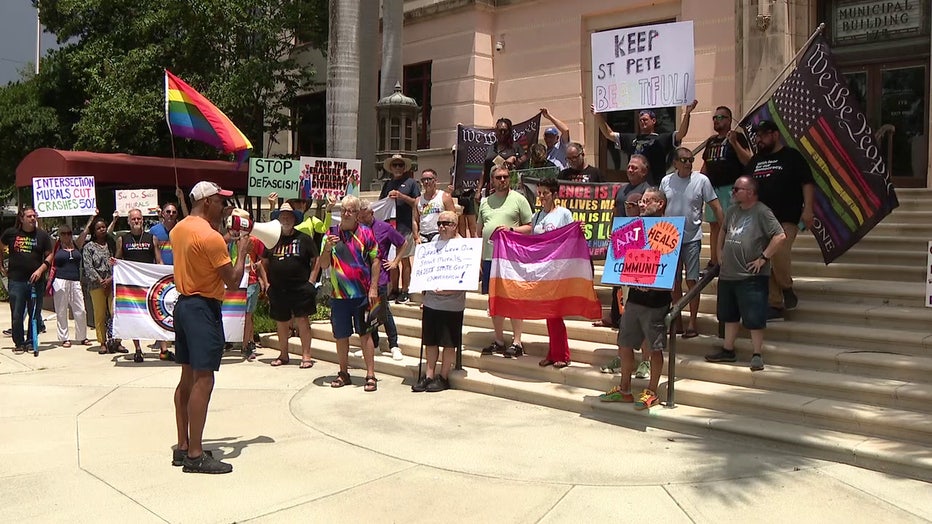
“Having this conversation is a false equivalency, saying that street art is going to make people unsafe when the lack of resources that could be taken away are actually what’s going to keep people unsafe,” he said.
What’s next:
St. Pete Mayor Ken Welch has said he wants to wait for more clarity from the state, particularly whether any exemptions to the law will be allowed, before making any final decisions.
The city council is expected to take up the issue formally in September.
The Source: Information for this story came from an interview with St. Pete Pride’s president, a local artist, a discussion during St. Pete City Council’s meeting and a statement from St. Pete Mayor Ken Welch.

